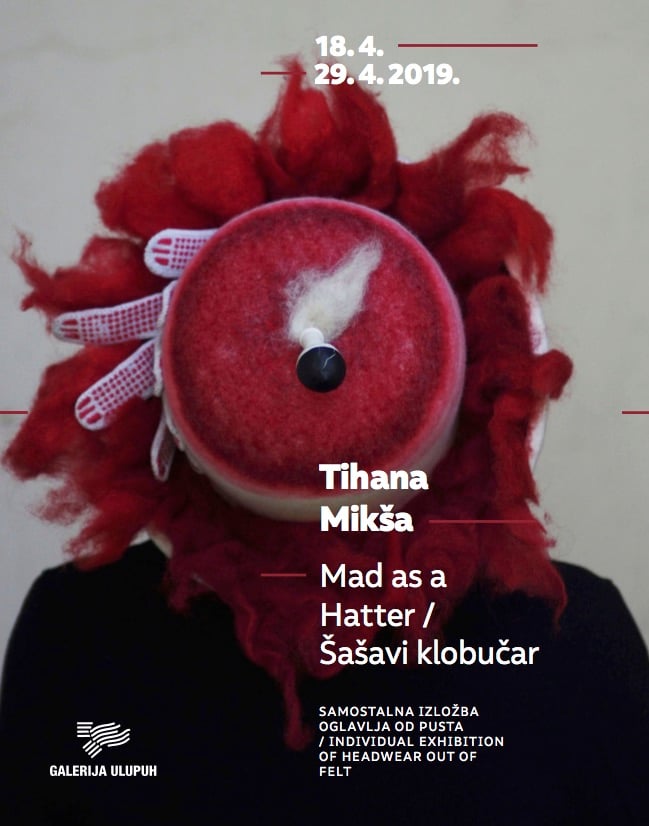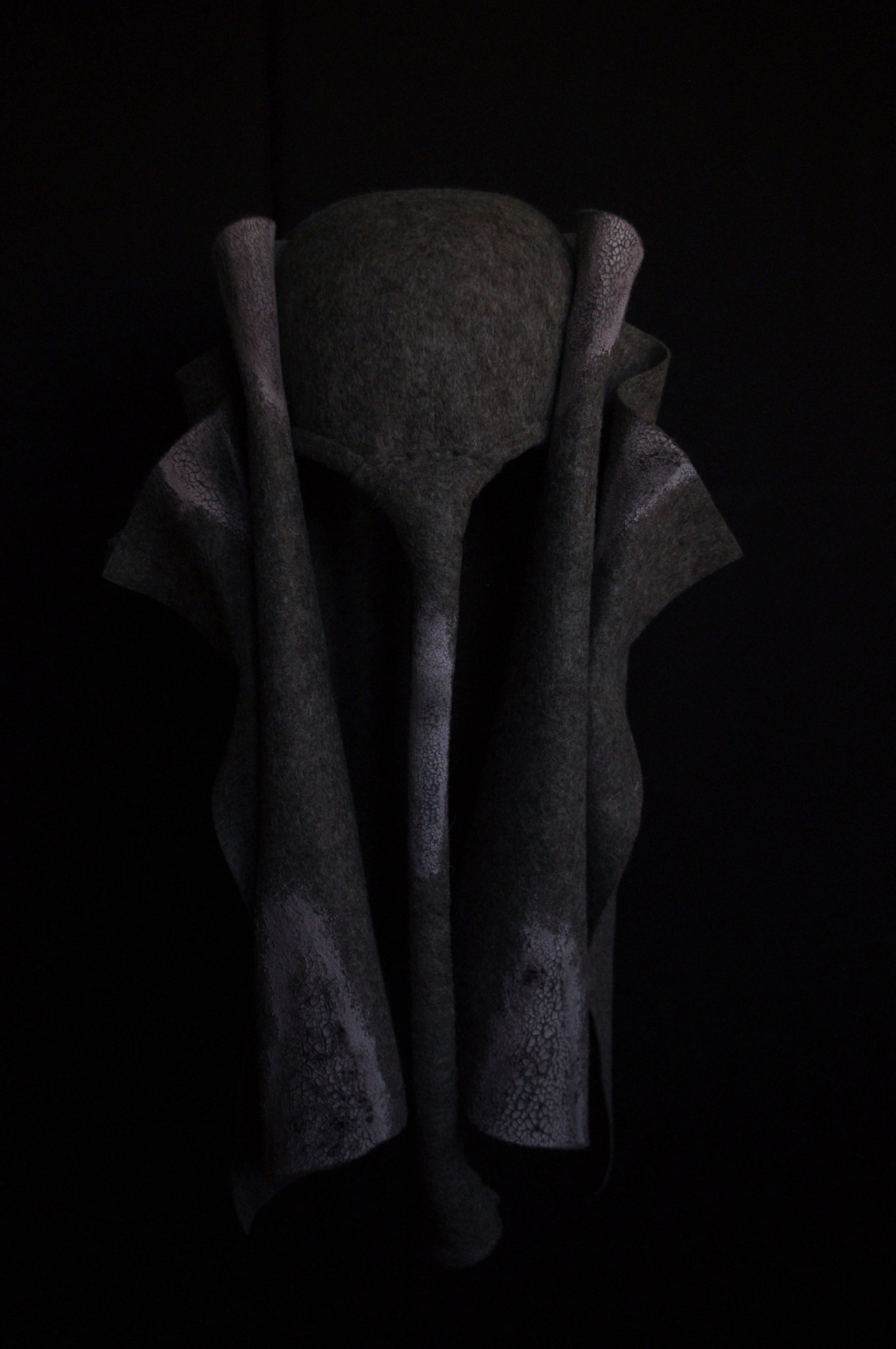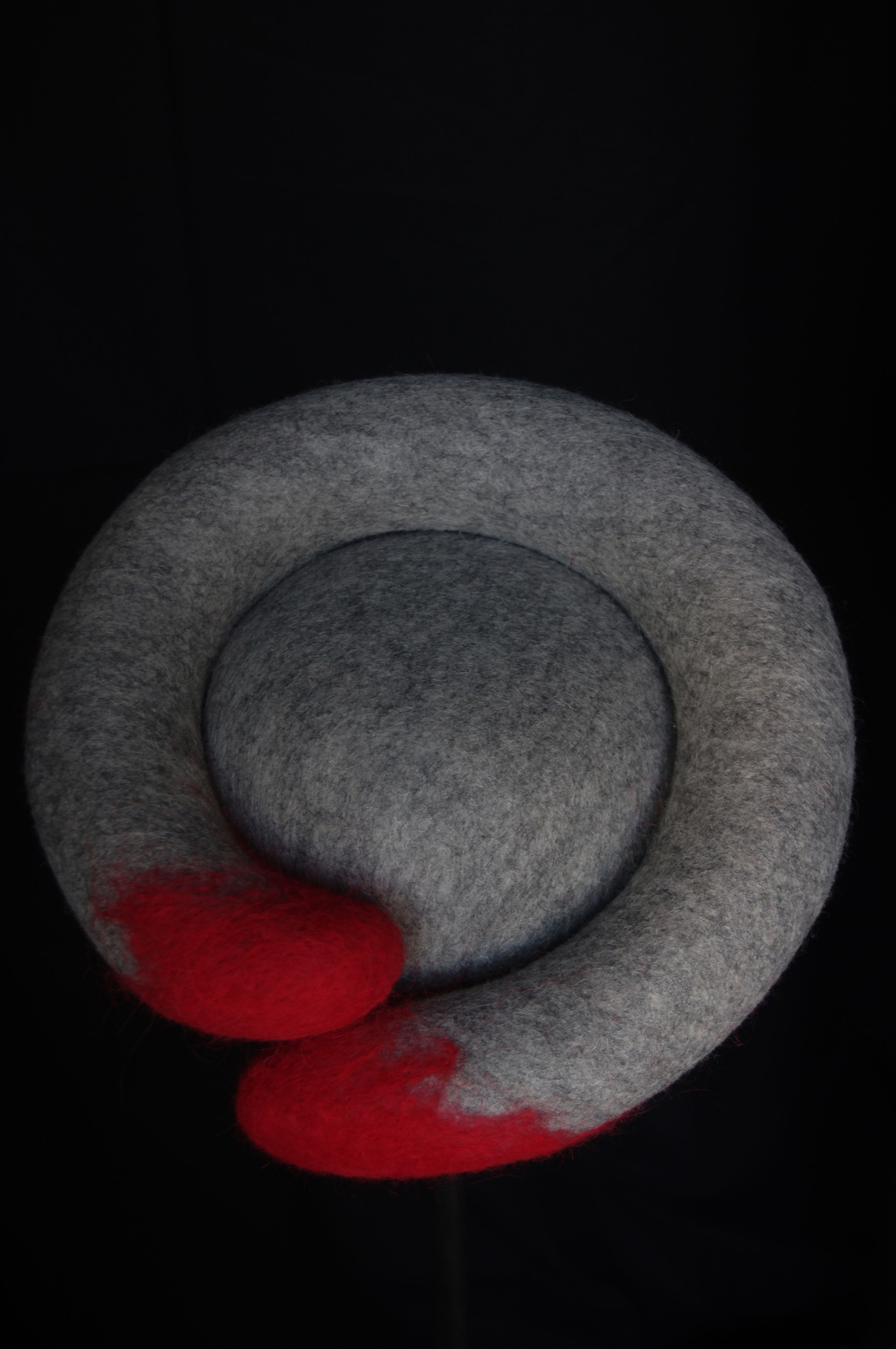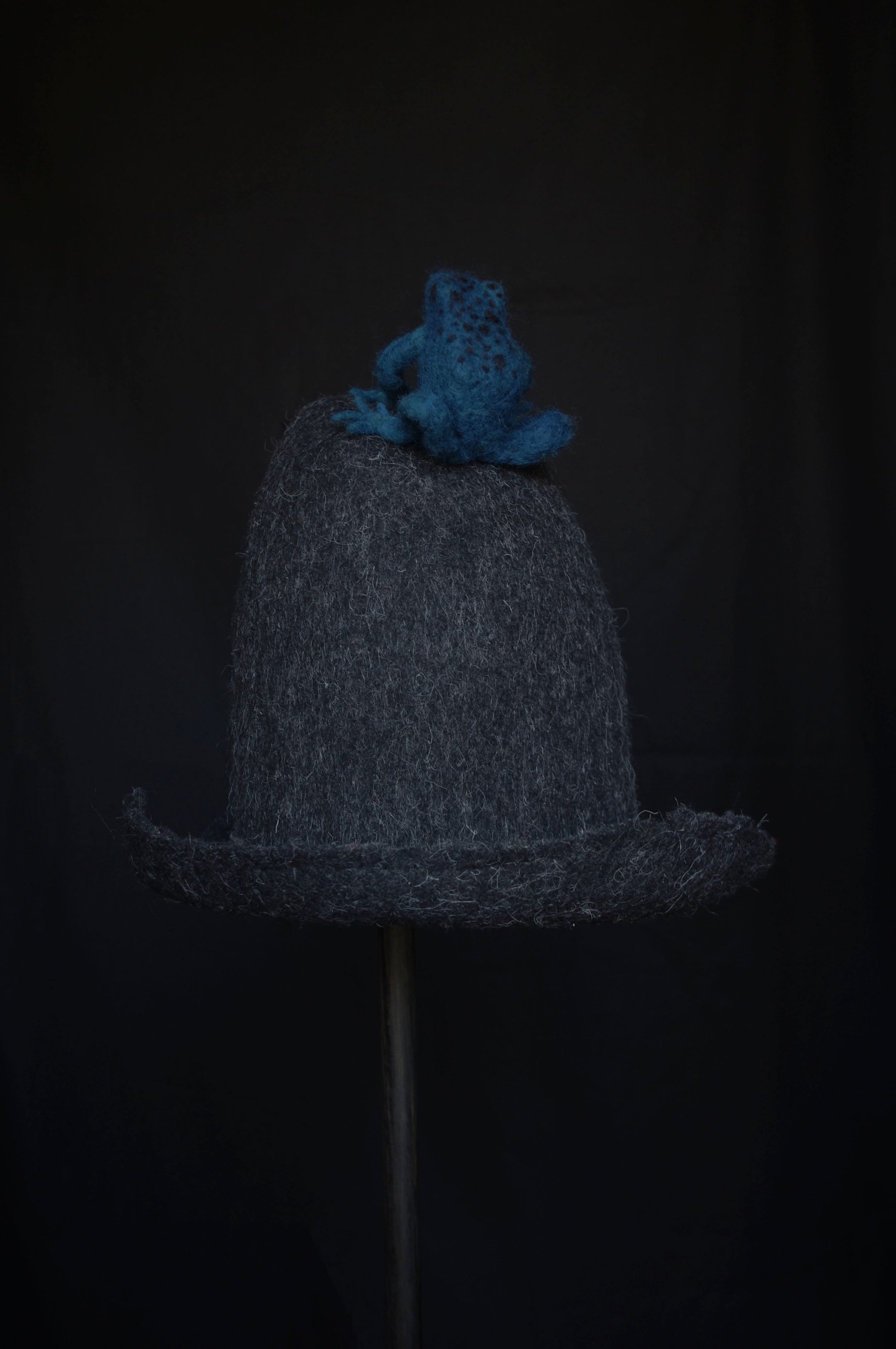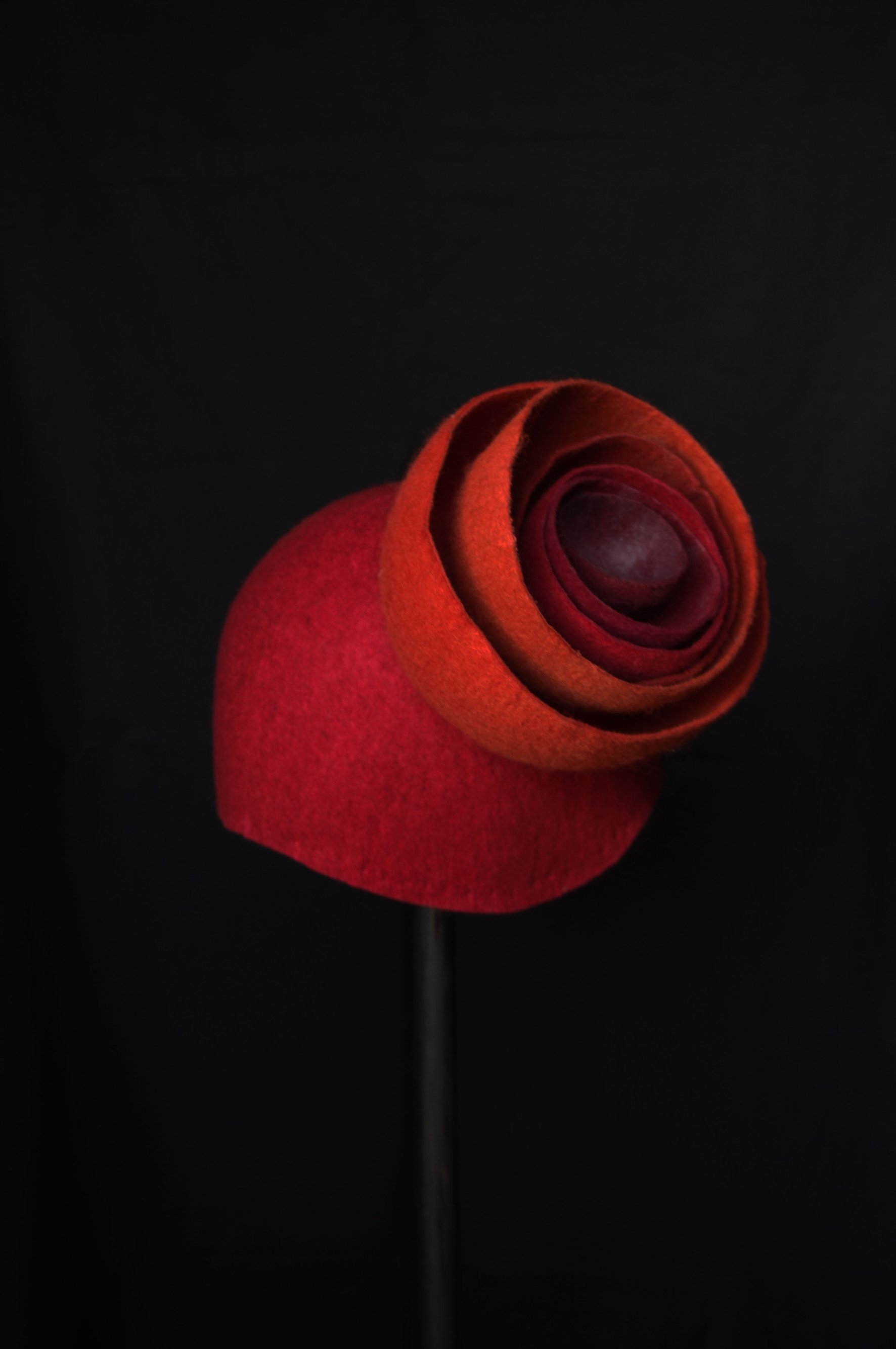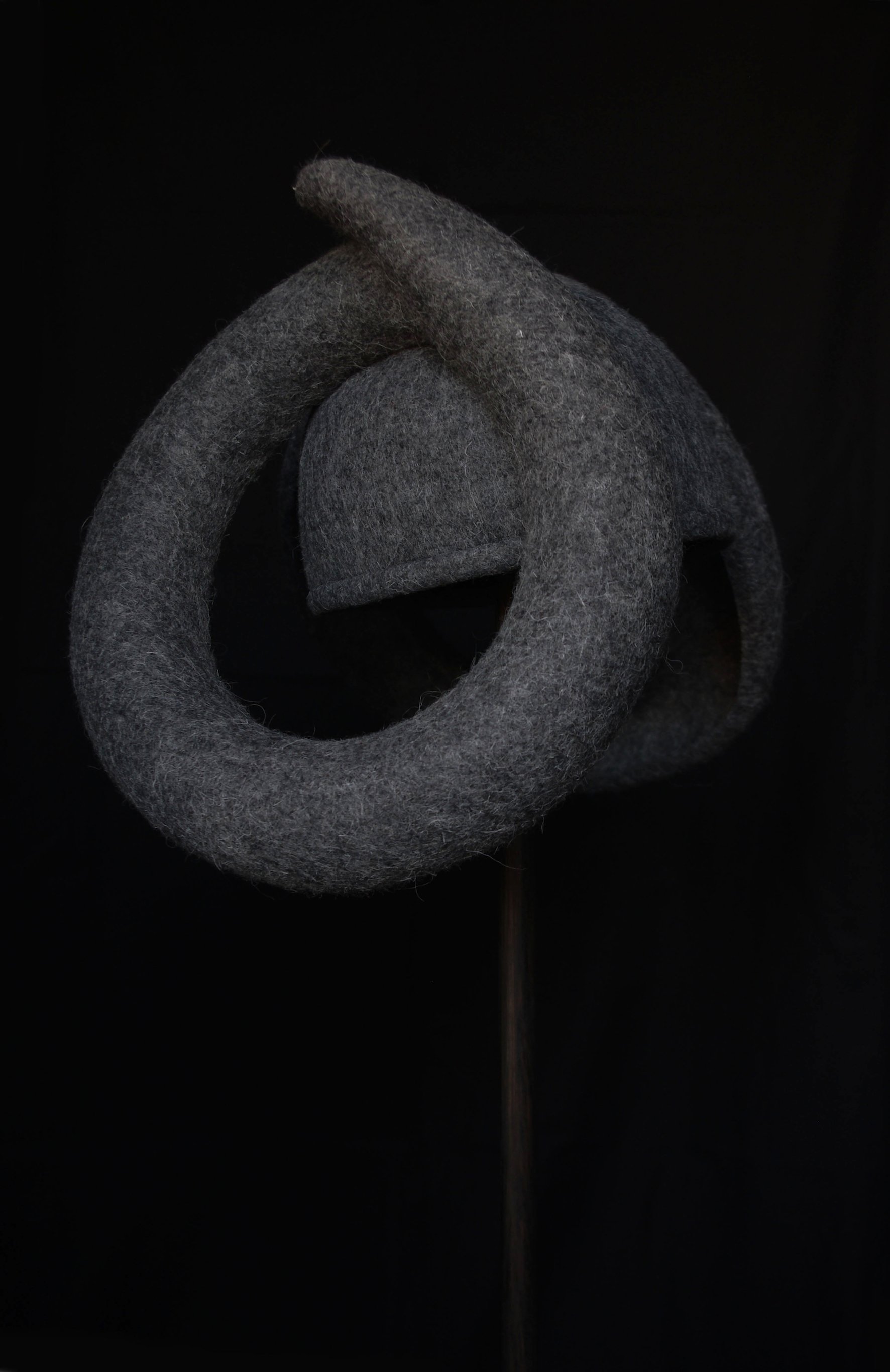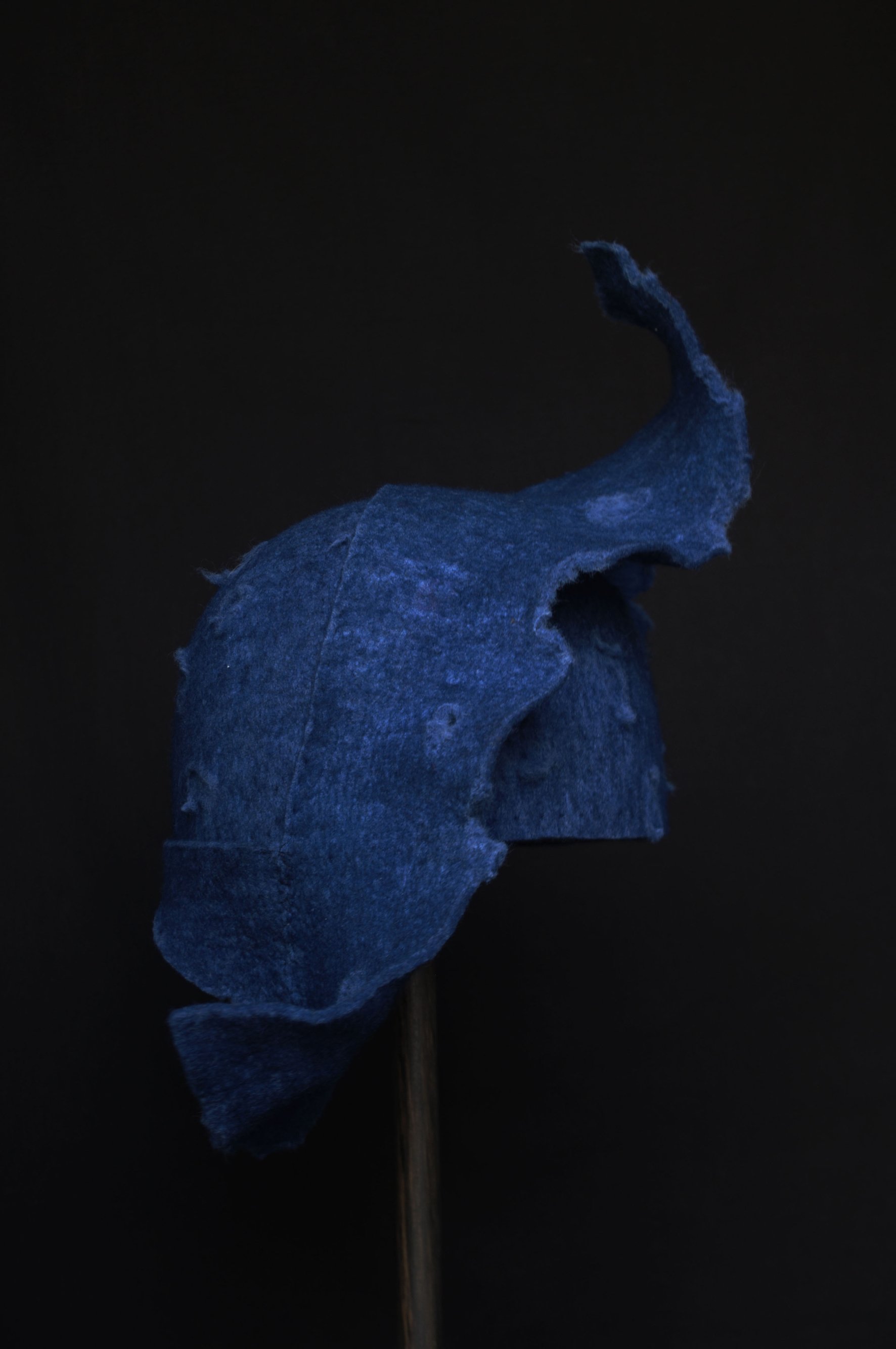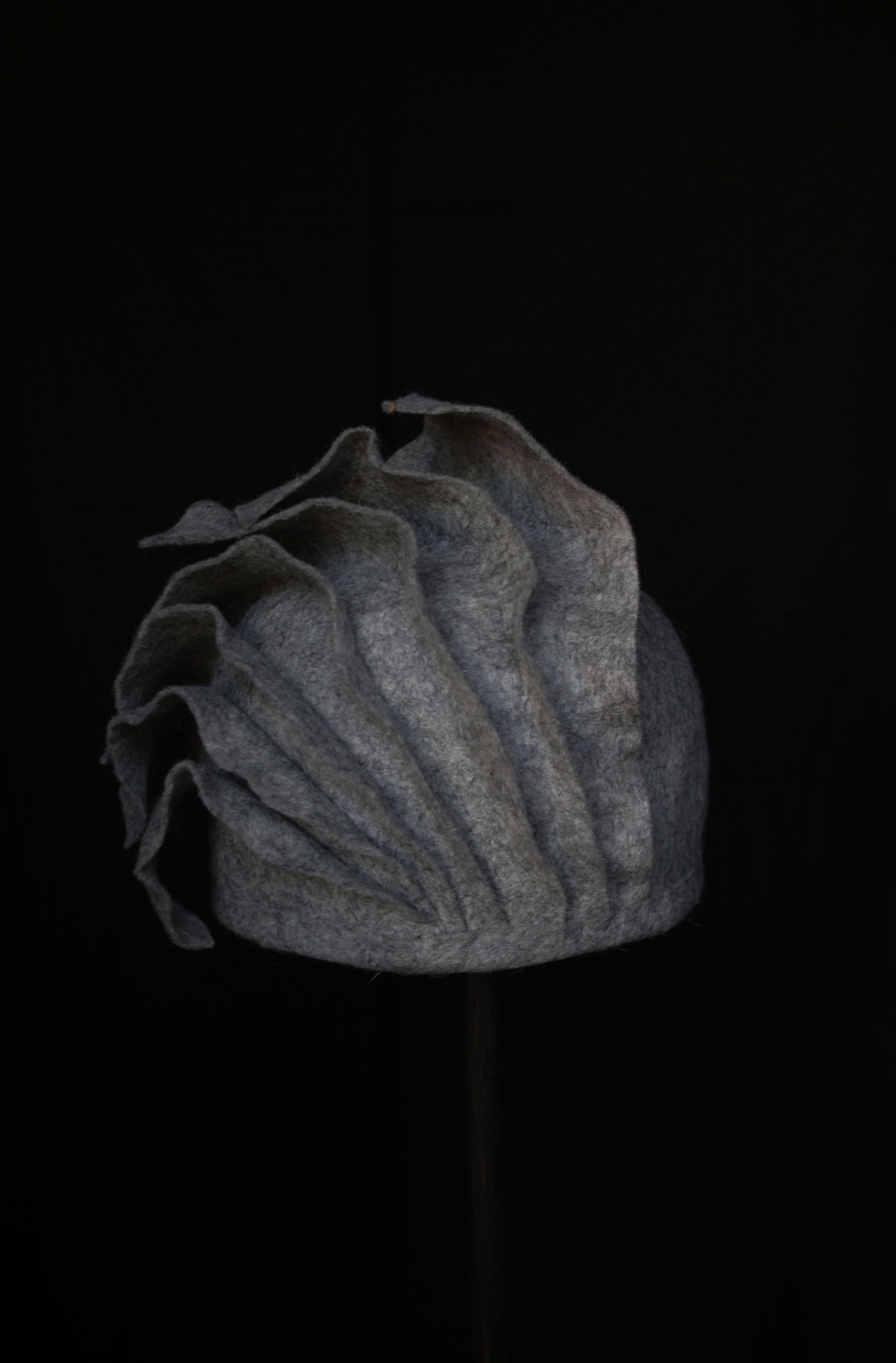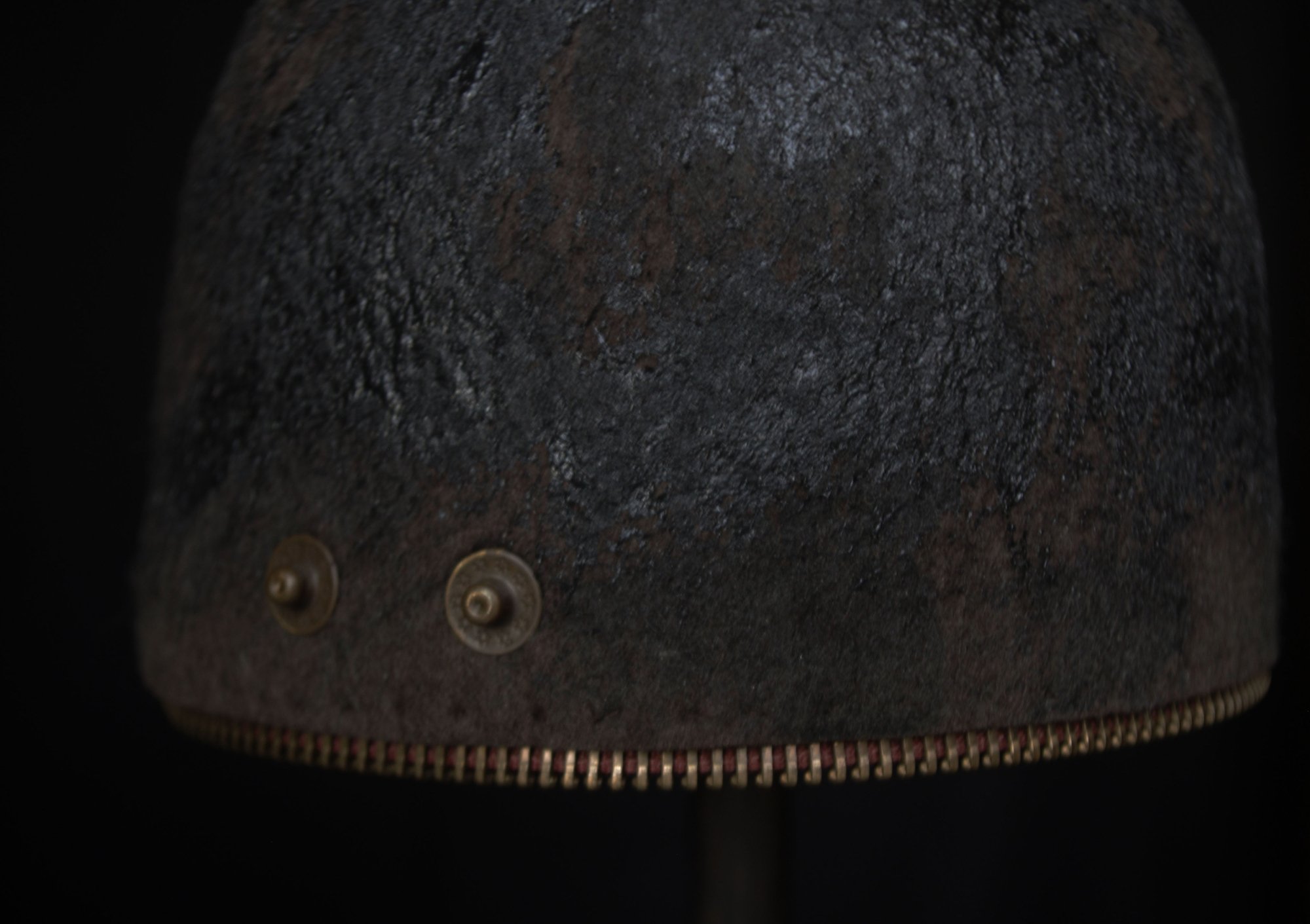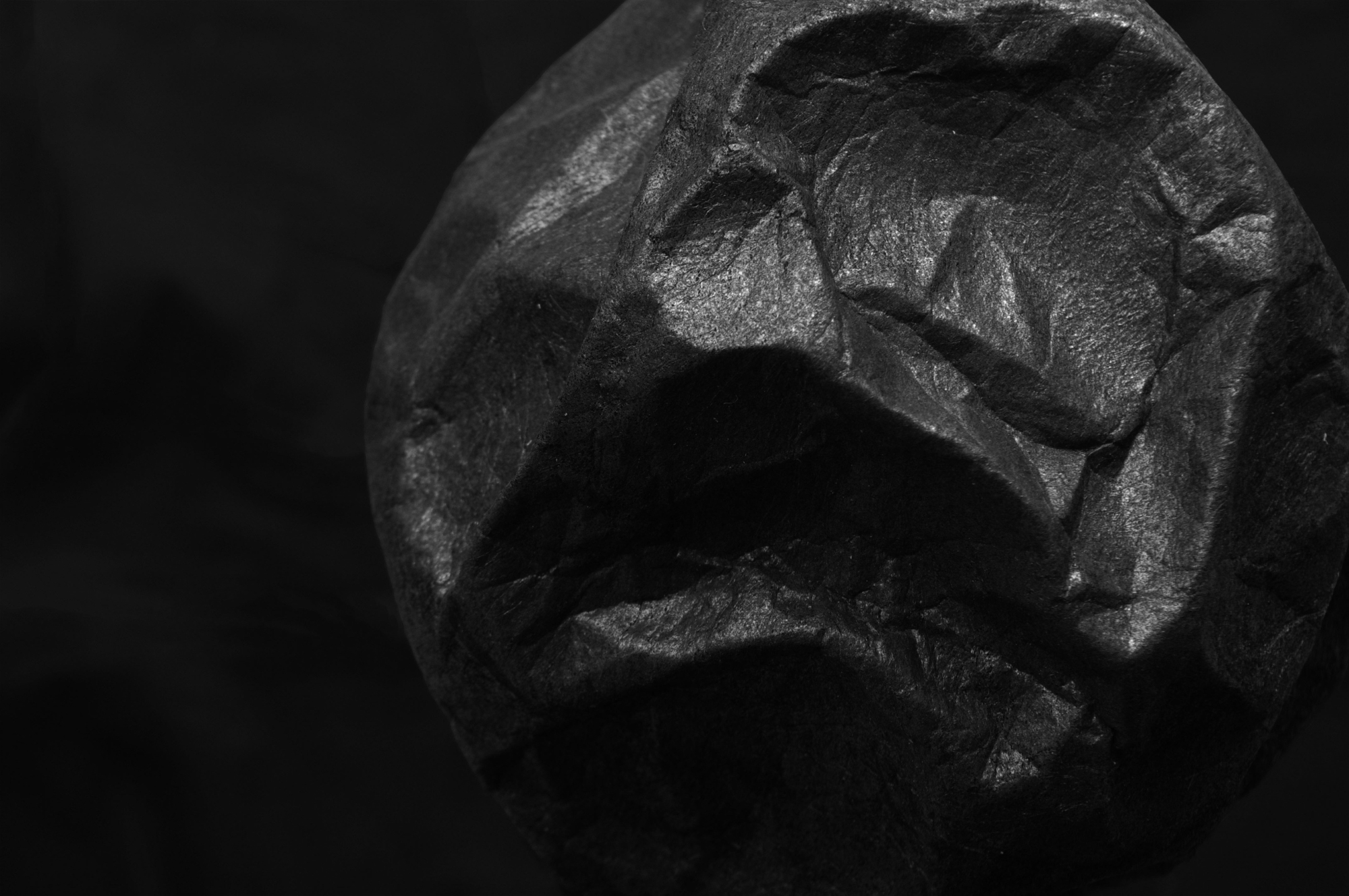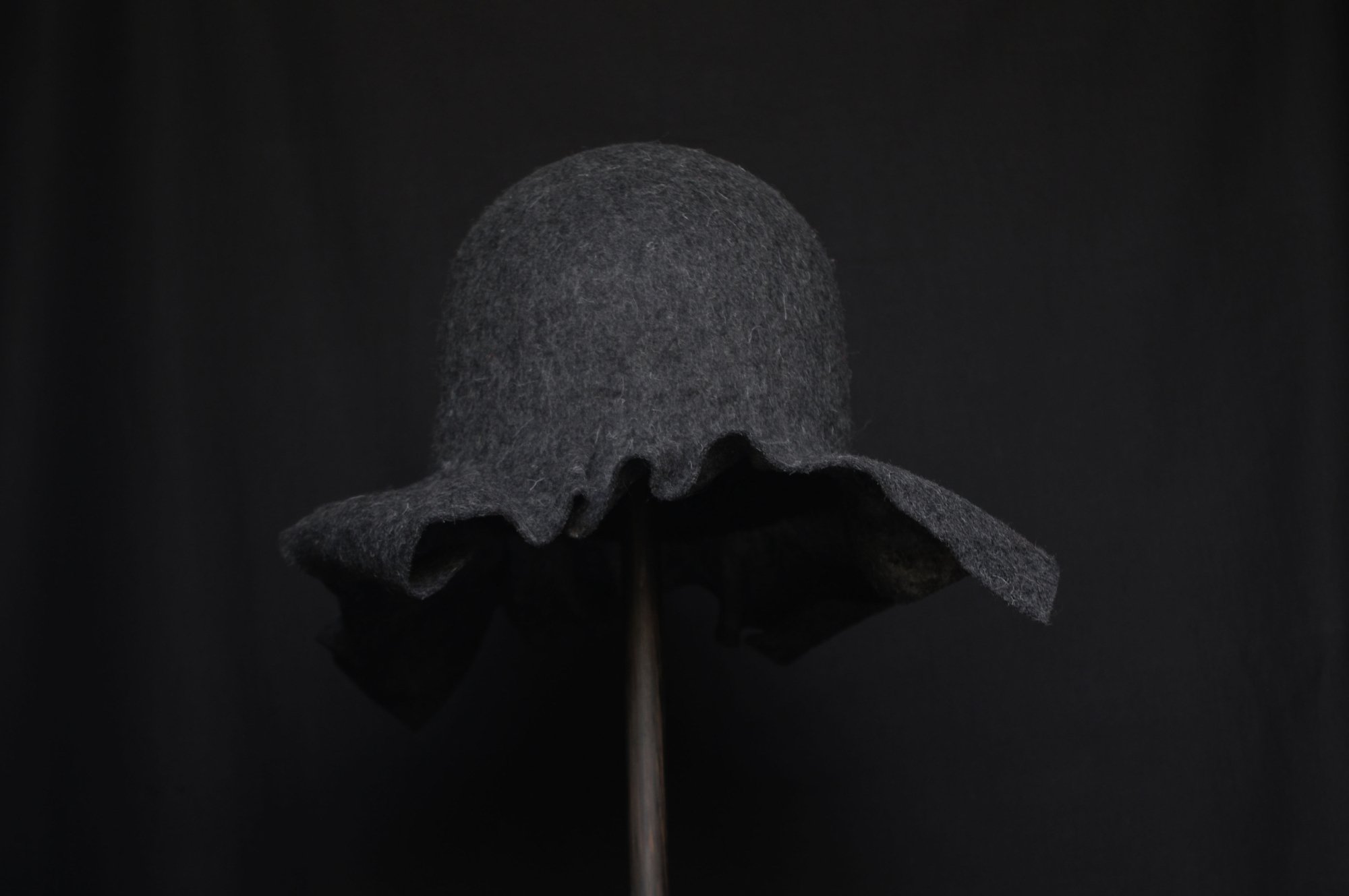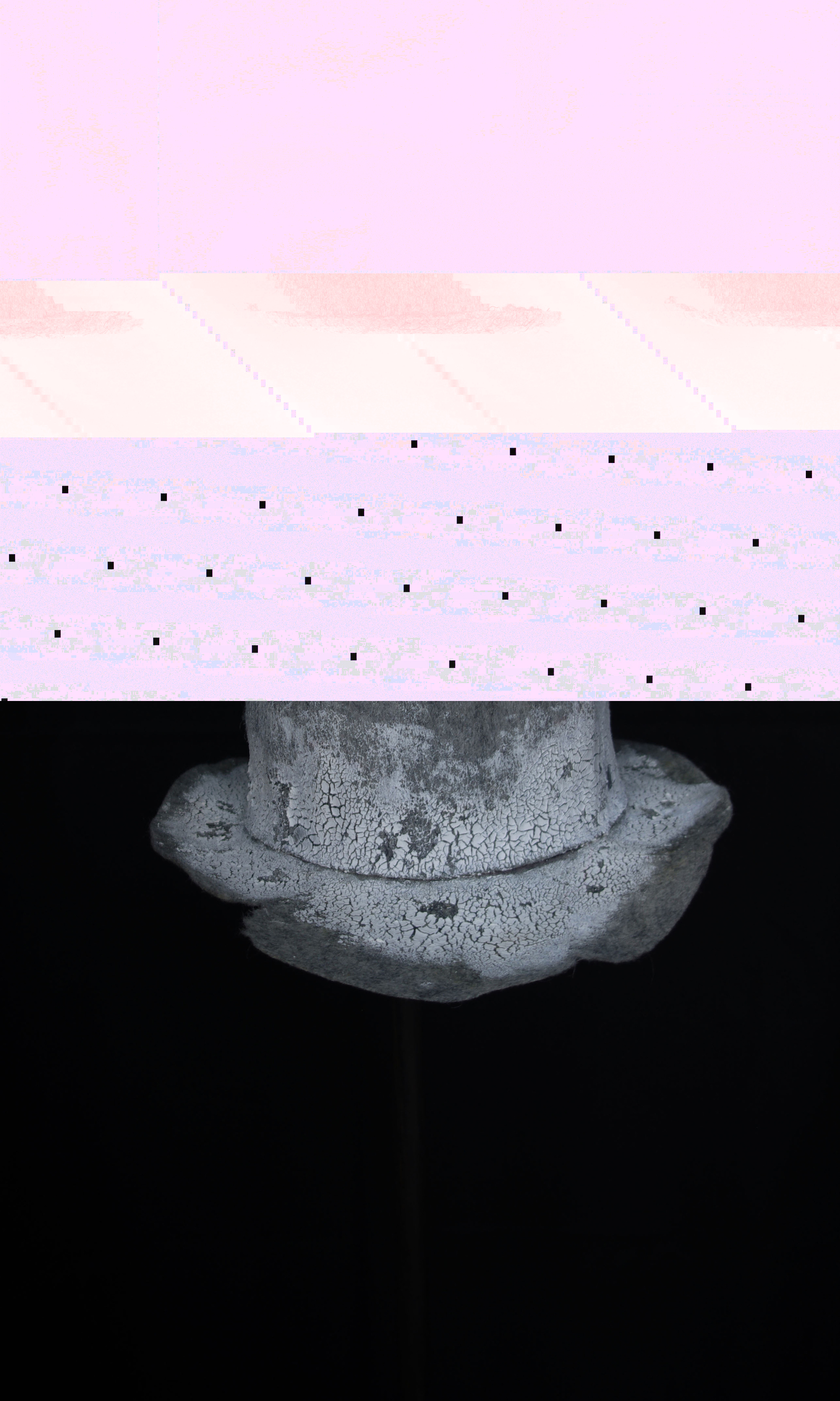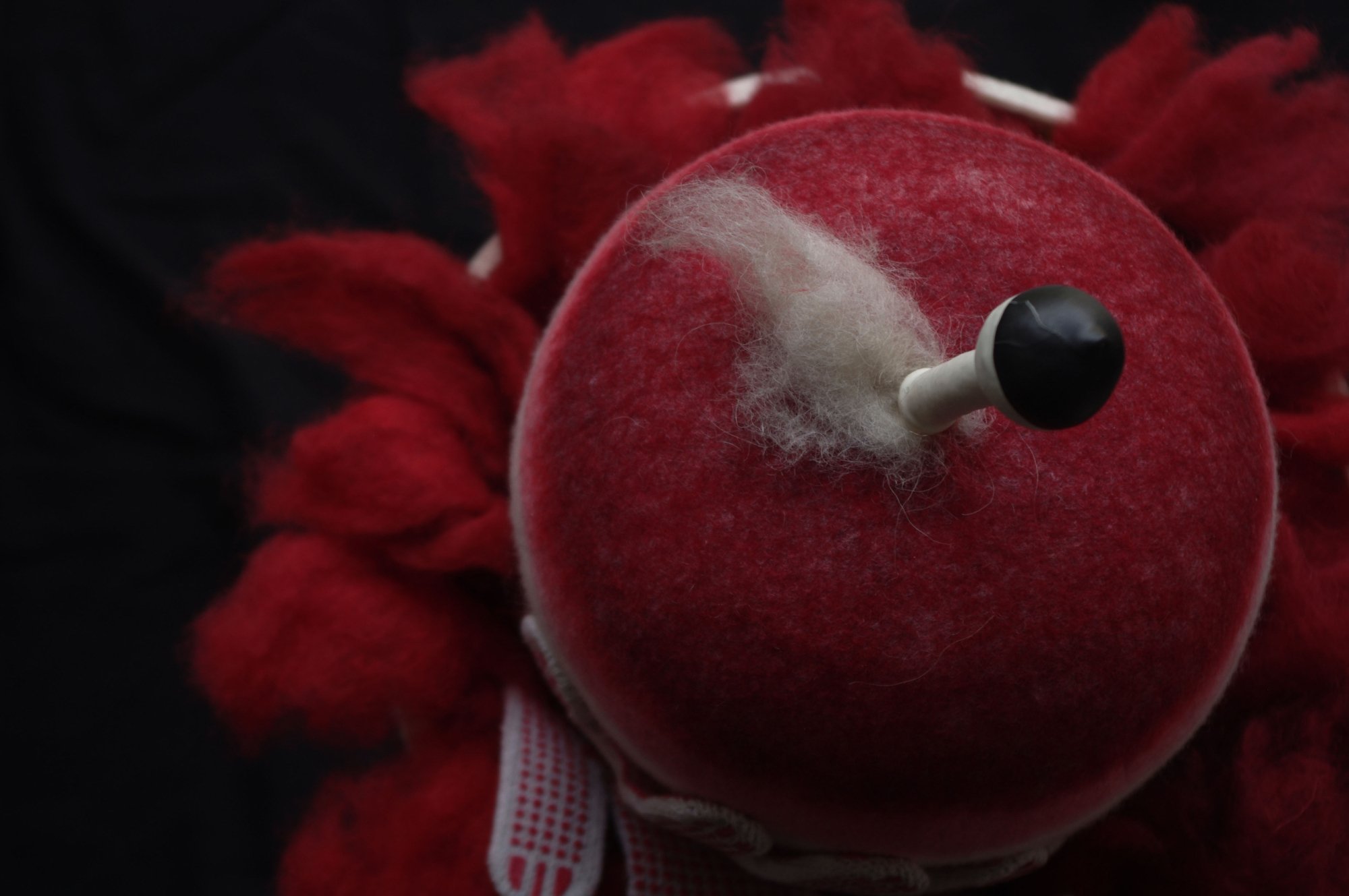Mad as a Hatter
“Mad as a Hatter” is the name of the recent collection of Tihana Mikša, a cavalcade of caps and hats formed on ve different principles. They are made out of non-woven material, out of felt, meaning the bonding and fixing of wool fibres, a recreation of traditional small-scale manufacturing processes, a kind of tribute to the old crafts that are rapidly vanishing under the pressure of the geographical space of the city being treated as commodity. The oldest known examples of felt date back to about 700 BC, and were found in the graves of Siberian nomads, who used it for the making of their clothing, saddles and tents; i.e. for almost everything artificial in their surrounds; three levels and scales of use articles. In the 19th century hats were an obligatory part of male attire in public space, and were made primarily by felting. Up to 1850, men wore felt hats inside as well.
The expression “mad as a hatter” was used in the 18th and up to the end of the 19th century for hatters who used mercury (II) nitrate in the process of making felt. This was done until they became aware of what is today a notorious fact, that this liquid metal breaks down the nervous system of a person who breathes it in, who will be afflicted by hallucinations and psychotic states. The best known such Hatter is a figure stuck in a time when it is always five in the afternoon, always time for tea, in the children’s stories Alice’s Adventures in Wonderland and Through the Looking Glass of Lewis Carroll. The mention of “children’s” here is an important sub-theme of the collection of Tihana Mikša since she creates, with egg-shaped and close fitting caps, with a motif of circlesvarying in sizes in various shades of achromatic grey, a figure of a woman-child, a neo-Art Déco “garçonne”, a gamine (another level of citationality is the post-modern calotte form of cap, after the fashion of the 1980s) in the sense of the neutralisation of the codes of seductiveness of its appearance. The imaginary of fairy tales is a hard one; they, like the first versions of fairy tales, founded on the folklore traditions of the Brothers Grimm, are harsh and frequently founded on absurdity.
Tihana Mikša uses felt (an extensible material used in the works of Joseph Beuys and Robert Morris) because of the ability of this material to be transformed, for the simple reforming of a textile plane into a three-di-mensional object, the newly acquired shape being retained. The Mad as a Hatter caps and hats can be seen as two collections. There is the fashionable design of utilitarian women’s caps with minimalist forms, modelled by pleating, folding and wrapping. The caps are highly usable and wearable, have excellent thermal qualities and the surface is highly water repellent, characteristics inherent to the material used. The hat collection was created later, a set of experimental objects-cum-headdresses of associative shapes. In working the surfaces of the hats, the artist uses printing pastes of various effects, as well as cornstarch, which generates a papery texture, a paperlike look, as English has it, as well as a pastiche of the papier-mâché technique. Tihana uses a historicist approach to technology (she is a “milliner”) as well as the process of re-semanticising the traditional forms of caps-hats-headpieces in an experimental slippage from fashion design into the area of sociology of taste, and, ultimately, into the art of the expanded media.
Silva Kalčić

